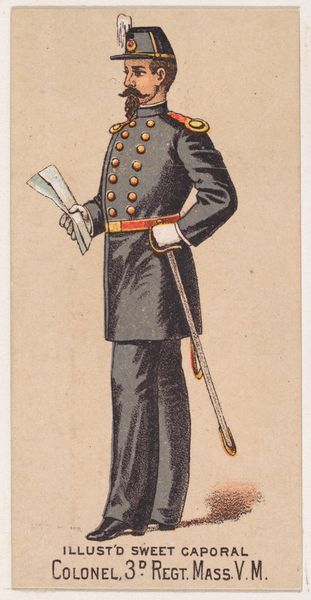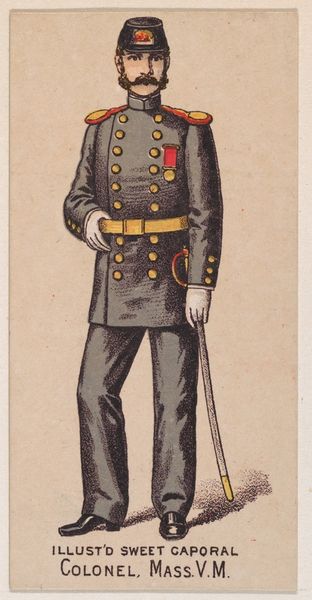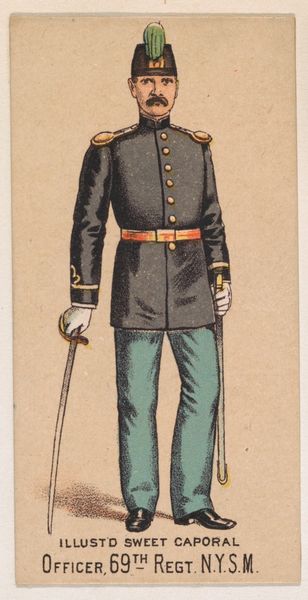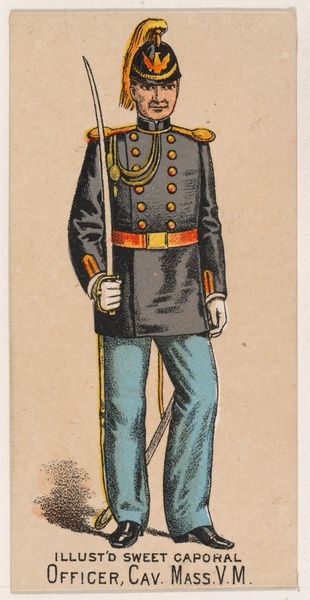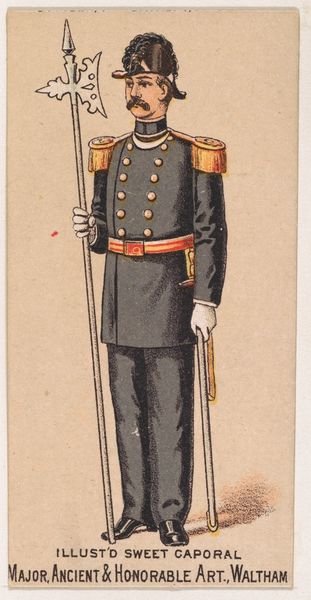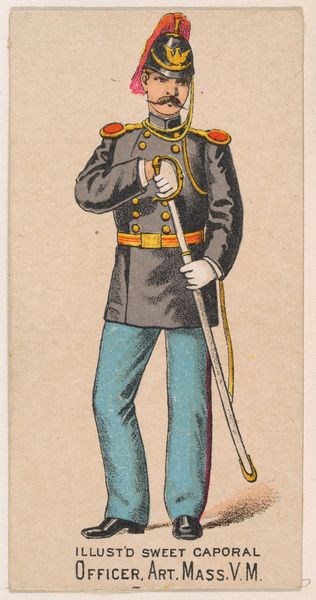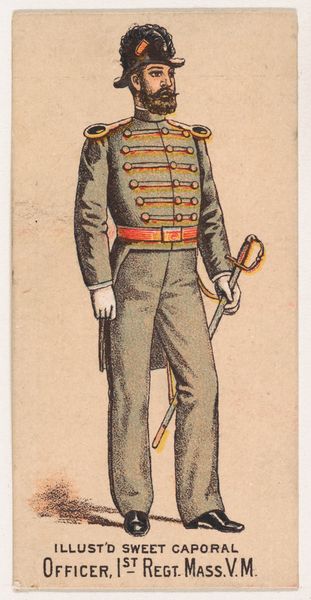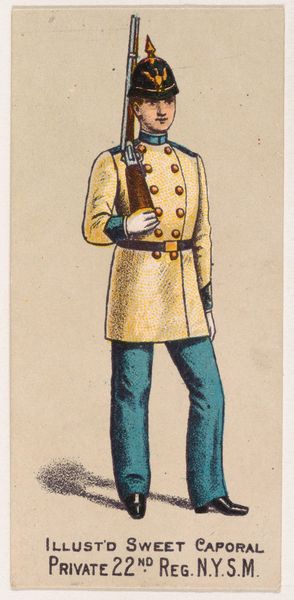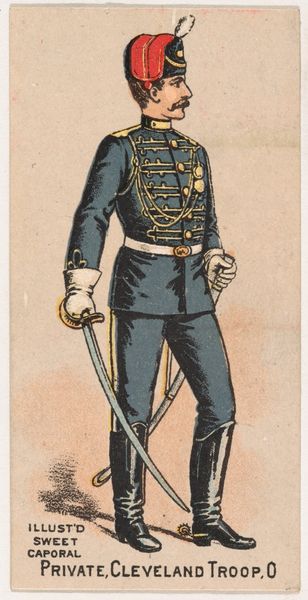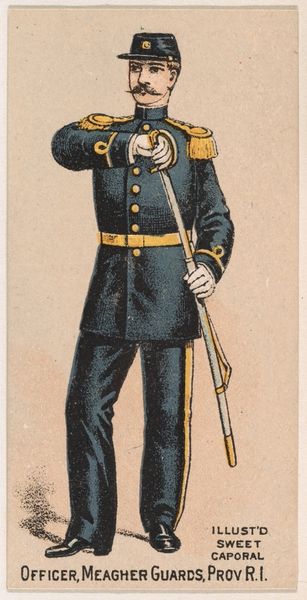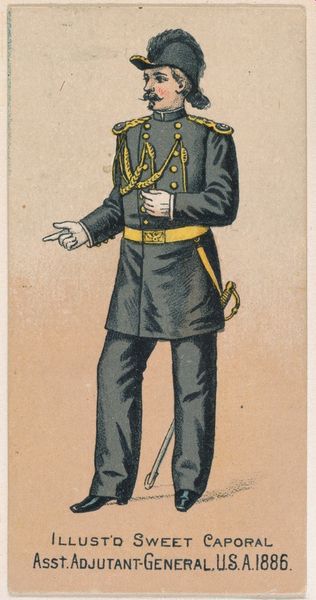
Officer, 1st Cavalry, Massachusetts, V.M., from the Military Series (N224) issued by Kinney Tobacco Company to promote Sweet Caporal Cigarettes 1888
0:00
0:00
drawing, print
#
portrait
#
drawing
# print
#
caricature
#
caricature
#
men
#
history-painting
#
academic-art
Dimensions: Sheet: 2 3/4 × 1 1/2 in. (7 × 3.8 cm)
Copyright: Public Domain
Curator: This print, "Officer, 1st Cavalry, Massachusetts," from 1888, was produced by the Kinney Tobacco Company. Part of a series used to promote Sweet Caporal cigarettes. What are your first thoughts? Editor: My initial impression is that of carefully controlled, manufactured heroism. Everything is so deliberately composed. Curator: Indeed, this image, like many in the "Military Series," romanticizes military figures. Kinney Tobacco leveraged patriotic sentiment to market their cigarettes. Note the officer's erect posture and direct gaze; he’s every bit the ideal leader. Editor: And there's a stark contrast between the grand representation and the humble material: a simple lithograph, essentially cheap advertising ephemera. What layers of meaning does it gather when we consider mass production techniques for marketing compared to traditional painting practices of heroism and historicism? Curator: That tension is interesting, particularly when viewed through the lens of the cigarette industry's broader impact. The visual glorification of military service hides the human costs of war as well as tobacco farming. The mass-produced prints aimed at the consumer market served to normalize those hidden human tolls. Editor: Precisely! The print almost presents a caricature with how neatly his hair and uniform are manicured. One has to ask if there's any attention paid to those in labor and material manufacturing. Was it the paper maker or printmaker whose health also suffered from the making of art and tobacco? Curator: That shifts the focus powerfully, emphasizing how the construction of public image relies on networks of labor. So the artistic and commercial act of this image is one that benefits from the cultural cachet that military service brings in those times of political change and tension. Editor: Looking at this today, it really makes one wonder about our role in reinforcing historical narratives that obfuscate more than they illuminate. Curator: It reminds me that our engagement with historical objects necessitates constant questioning of whose stories get told, how, and why. Editor: Exactly. Now I see that the seemingly innocuous object truly carries multiple layers of significance and implications related to art, industry, labor, and consumerism.
Comments
No comments
Be the first to comment and join the conversation on the ultimate creative platform.
